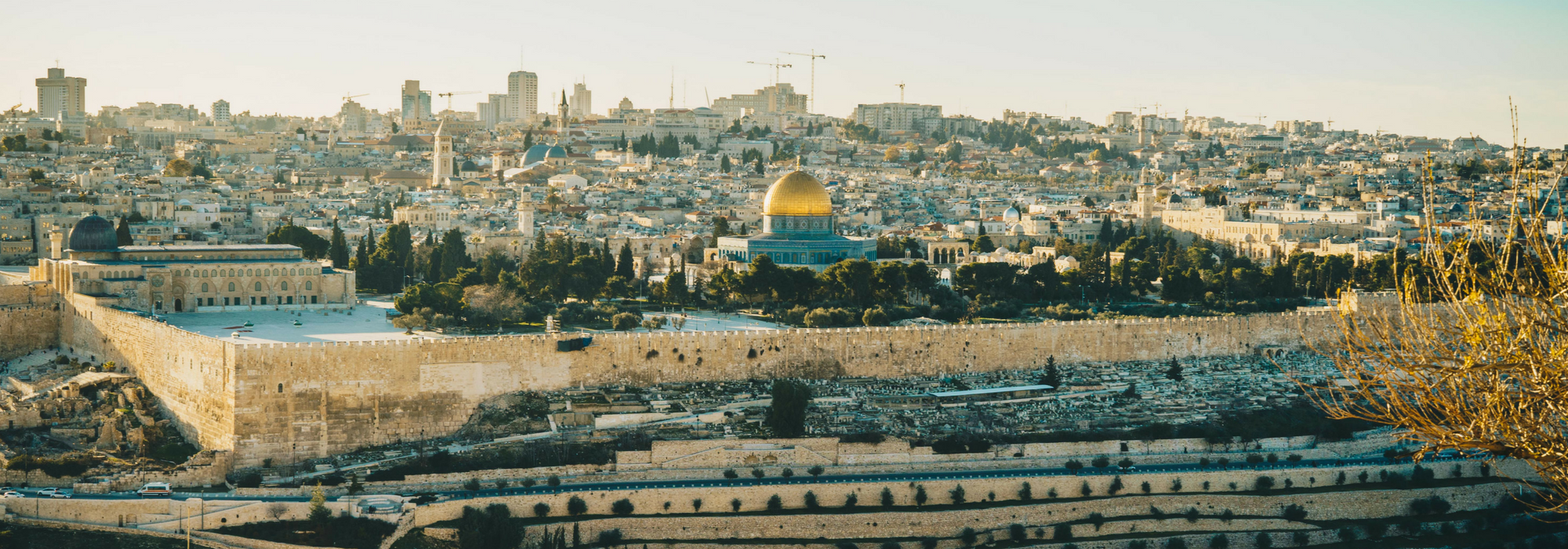
by: Rev. Dan Brown Deputy Head, International Development Department
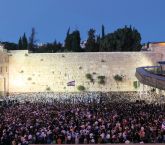
Photo by Ashernet
First time visitors to Jerusalem often make the same mistake I made about one of the most sacred sites in the city! On my first visit in 2010, I was surprised to learn that the most important “wall” in the Old City of Jerusalem was called something other than the “Wailing Wall.” Knowing that the place where the Jewish people gather to pray was located on the western side of the Temple Mount helped me understand why it was also called the Western Wall. But for my whole life, I had only heard one term, so I was still puzzled, “Is it the ‘Western Wall’ or the ‘Wailing Wall’?” And why, of all the amazing sites in Israel, is this stone wall so incredibly important to Jews and Christians alike?
Present-day Jews are emphatic in calling it the “Western Wall,” while non-Jews will often use either name. Many would argue that this is just a matter of semantics, yet these terms are often fraught with religious and national implications that have led to contentious debates. Such was the case during the discussions that led to the Oslo Accords in the 1990s. It is important to realize, however, that the name “Western Wall”—known in Hebrew as HaKotel HaMa’aravi (הכתל המערבי)—is actually much older than the term “Wailing Wall.”
Rabbi Acha, a 4th-century scholar, appears to have been the first to refer to the wall that remained after the destruction of the Temple as the “Western Wall,” and the 11th-century Italian–Hebrew poet, Ahima’az ben Paltiel, provided unmistakable use of HaKotel HaMa’aravi in reference to the Western Wall.
It wasn’t until the 19th century that the Western Wall began to be referred to as “the Wailing Place,” a practice attributed to Europeans who began to visit what was then called Palestine. The English name “Wailing Wall” is, in fact, a 20th century term that was first used by the British following their capture of Jerusalem from the Ottoman Turks in 1917. Shortly after the onset of the British Mandate, “Wailing Wall” became the common term, with no apparent objection from the Jewish people at that time. This clearly changed, though, following Israel’s victory in the Six Day War of 1967. As the war brought about the reunification of Jerusalem and full access to the Wall, it became a place of national pride and celebration.
Rabbi Feldman, of the Jewish Center of Princeton, adds to the discussion that the term “Wailing Wall” is not an endearing or appropriate term, saying that it implies that Jews go there to “wail” rather than to pray, or that only prayers of lament are said in the sacred place below the Temple Mount.
So, in Hebrew, it has been HaKotel HaMa’aravi, at least for the last thousand years. And in Israel today, one generally hears no more than HaKotel, ”The Wall.”
Understanding the preferred name of this most sacred of Jewish sites is important for Jews and Christians alike, but it is even more important to understand the history of this Wall and its place in the lives of the Jewish people.
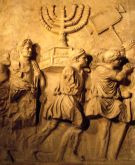
Roman soldiers carry away the spoils from the Second Temple in Jerusalem Kathy DeGagne/ Bridgesforpeace.com
Jerusalem, built on Mount Moriah, is one of the world’s oldest cities, with roots going back to Creation. The Jewish people claim that since the days of Creation, the Foundation Stone (Even HaShtiyah, אבן השתייה) has lain on Mount Moriah. Upon this mountain, at the command of God, Abraham bound and nearly sacrificed his son, Isaac. Twice, the Temple was built on Mount Moriah, and twice it was destroyed. King Nebuchadnezzar of Babylon destroyed the First Temple in 586 BC. Seventy years later (515 BC), those who returned to Jerusalem constructed the Second Temple. Around 20 BC, King Herod enlarged the Temple complex, surrounded it with massive walls, and rebuilt the Temple within these walls.
On the 9th of Av in the year AD 70, following the “Great Revolt” against the Romans, Titus’ armies conquered Jerusalem and the Temple, setting it on fire and destroying its walls. They did not, however, completely destroy the Wall, as it must have seemed too insignificant to them; it was not even part of the Temple itself, just an outer wall surrounding the Temple Mount. The Western Wall, therefore, remained standing, with its original length intact.
Jerusalem’s history over the next 1,900 years can be characterized as a series of tribulations by numerous conquering armies and peoples. Around AD 130, Roman Emperor Hadrian, the suppressor of the Bar Kochba revolt, rebuilt Jerusalem as a pagan city and renamed it Aelia Capitolina.
In the 4th century, when Christianity became the religion of the Roman Empire, the Byzantine, or eastern, Roman emperors declared Jerusalem a holy city of Christianity. In AD 638, the Moslems conquered Jerusalem, and in an effort to transform it into a Moslem–Arab city, they built mosques on the Temple Mount.
In 1099 the Crusaders conquered Jerusalem, and in 1187 Saladin, the Moslem ruler of Egypt and Syria, expelled the Crusaders from the city. Over the next 330 years, various Moslem dynasties controlled Jerusalem until the Ottoman Turks conquered it in 1517. In 1538, the walls that we see today were built around Jerusalem under Suleiman the Magnificent. The Ottoman Turks oppressed the city for 400 years until it came under the control of the British Mandatory Authority near the end of World War I in 1917.
Throughout these difficult centuries, the Jewish people never abandoned thoughts of their destroyed Temple, the holiest place in Jewish life. They not only prayed for it to be rebuilt, but they also made pilgrimages to its former site in order to pray and touch the ancient stones. Foreign rulers of the land often pushed the Jewish worshippers away from the Temple area and the Mount of Olives until they managed to hold onto only a small area alongside the Western Wall. “During the more than one thousand years that Jerusalem was under Moslem rule, Arabs often used the Wall as a garbage dump so as to humiliate the Jewish people who visited” (Jewish Virtual Library).
In addition to such humiliations, the appearance and form of the Western Wall changed dramatically during Jerusalem’s 1,900 years of foreign domination. In Touching the Stones of Our Heritage, the Wall is described thus:
It was as if the Wall had shrunk into the ground. Its stature was bowed and its glory concealed. Conquering armies poured out their wrath on it, eroding its magnificence. Assorted rulers concealed its lower stone courses by using them as the foundation for infrastructure and building projects. And they completely altered the appearance of the valley below; until eventually, by the beginning of the sixteenth century, only one small section of the Western Wall remained visible—an imprisoned enclave hidden among the houses and courtyards built adjacent to it. It was a wall of magnificent large stones standing on the eastern side of a narrow lane. The Western Wall appeared thus in drawing, tapestries, and engravings in every Jewish home. Moreover, this was the searing image indelibly etched in the Jewish people’s consciousness.
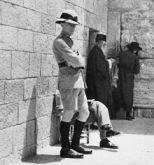
British soldiers stood guard at the Western Wall
The British Mandatory government, like its Turkish predecessors, did not recognize the Jews as the legal owners of the Western Wall. For nineteen years, from the War of Independence in 1948 until the Six Day War of 1967, the Western Wall (HaKotel) stood desolate under Jordanian rule. Not one Israeli Jew was allowed access to the Wall in spite of Jordan’s signing of the armistice agreement of 1949 that guaranteed Jews the right to visit it.

Liberation of the Western Wall-1967
Incredibly, in 1967, Israeli paratroopers managed to break through to the Old City through the Lions’ Gate, during the Six Day War. The Western Wall and Temple Mount were liberated, Jerusalem was reunified, and the Jewish people were again able to come to the Western Wall to pray. The holy site that had been the longing of every Jewish heart was now under their sovereign control. In his book, Jewish Literacy, Rabbi Joseph Telshkin, writes, “One of the first to reach the Kotel in the Six Day War was Israeli Defense Minister Moshe Dayan, who helped revive the traditional Jewish custom of inserting a written prayer into its cracks. It was later revealed that Dayan’s prayer was that a lasting peace ‘descend upon the House of Israel.’”
The reunification of Jerusalem slowly revealed that there was far more to the length and depth of the Western Wall than anyone had previously known, exposing secrets that are still being discovered.
The full length of the Western Wall is 1,600 feet or 488 meters. The first 262 feet (80 meters) on the southern end of the Wall were uncovered and studied immediately after the Six Day War. The Prayer Plaza, which was extended in the years following the Six Day War, is located in the next section to the north and measures 187 feet (57 meters). So the section of the Wall seen from the Prayer Plaza constitutes just one-ninth of its total length! The remaining 1,050 feet (320 meters) of the Wall continues underground beneath the streets and houses of the Old City of Jerusalem.
In 1968, the Ministry of Religious Affairs began to excavate the entire length of the Western Wall through a long narrow tunnel under the buildings of the present Old City. This 1,000 foot northern section of the Wall was in pristine condition, exactly as constructed by King Herod. Here, archaeologists believe, one is walking on the original pavement from the Second Temple Period and following in the footsteps of the pilgrims who walked here 2,000 years ago on their way to participate in the rituals on the Temple Mount.
In addition to the beauty and awesomeness of the Roman and medieval-era stone courses and vaults that one encounters along the tunnels, one of the most awe-inspiring sections along the Wall is an alcove known as “Opposite the Holy of Holies.” Here, the Western Wall is closest to the heart of the Temple Mount, due west of where the Holy of Holies existed within the Temple. Here, many visitors—including myself—stop for a moment of silent prayer and reflection at the section facing “the place in which the LORD your God will choose…” (Deut. 12:11).
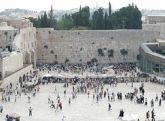 Praying at the Wall is a unique and often very spiritual experience. Many people claim that they feel closer to God. A prominent rabbi wrote, “Once you have lived a moment at the Wall, you never go away.” Rabbi Feldman of the Jewish Center of Princeton put it this way: “It’s a memorable experience, standing there before that wall, looking around at the crowds, pondering the generations that have been there before, being overwhelmed by the atmosphere of prayer, sensing that you are part of something much bigger than yourself.”
Praying at the Wall is a unique and often very spiritual experience. Many people claim that they feel closer to God. A prominent rabbi wrote, “Once you have lived a moment at the Wall, you never go away.” Rabbi Feldman of the Jewish Center of Princeton put it this way: “It’s a memorable experience, standing there before that wall, looking around at the crowds, pondering the generations that have been there before, being overwhelmed by the atmosphere of prayer, sensing that you are part of something much bigger than yourself.”
Rabbi Joseph Telushkin calls the Western Wall “an open-air synagogue” and the large plaza offers 24-hour access to the Wall, where supplicants can be found any time of the day and night. Some of the best times to visit are the quiet, late-night hours or during holidays and bar-mitzvahs when the area is filled with worshippers.
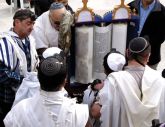
Kathy DeGagne/ bridgesforpeace.com
I love the description of a typical Sabbath at the Wall that was offered by Charleeda Sprinkle, the former assistant editor of BFP’s Dispatch from Jerusalem: “On the Sabbath, I love watching shawl-draped men lift up an open scroll or listening to a chorus of men’s voices singing their prayers. Traffic in and out of the plaza is continuous, with Jews and Gentiles alike flocking to it: young and old, rich and poor, the maimed and simple-minded, the religious and tourists—some looking quite overwhelmed.
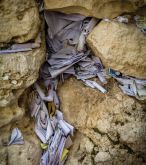
Precious Fleming/ bridgesforpeace.com
Most come with a prayer on paper to cram into a small crack in the Wall. (I even saw a handful taped to the Wall with wide, white medical tape!) The overall impression I get from the people and the prayers—both written and spoken, sometimes evoked with wracking sobs—is the massiveness of the need brought to this place called the “center of the earth” (Ezek. 38:12, RSV). Yet, God is able to hear and answer them all.”
On most occasions it is possible to go right up to the Wall, provided—as a male—you are wearing a yarmulke or kippa, which is available free of charge at the plaza. As you stand at the Wall, you will notice scraps of paper stuffed into the cracks and crevices. These are messages and prayers described in the passage above. Rabbi Telushkin also writes that “the custom of inserting written prayers into the Kotel’s cracks is so widespread that some American–Jewish newspapers carry advertisements for services that insert such prayers on behalf of the sick. The mystical qualities associated with the Wall are underscored in a popular Israeli song, a refrain of which says: ‘There are people with hearts of stone, and stones with hearts of people.’” Even the old adage, “The walls have ears,” is purported to be a Hebrew expression that was originally said about the Western Wall.
There are many occasions during which large crowds can be found at the Kotel. These include Friday evenings (known as Erev Shabbat), “all of the Jewish feasts or holidays, and the fast of Tisha B’Av, which commemorates the destruction of the First and Second Temples. More than just a place of prayer, the Wall has become a national symbol where many ceremonies, including secular ones, are conducted”(Jewish Virtual Library).
For me, praying at the Wall has been a truly moving experience. Each time, I have felt great excitement, an incredible sense of history, and an awe and respect in recognizing that this has been a highly venerated and holy site for centuries. Here, one cannot help but have an expectation that God will hear the prayers of sincere supplicants and is doing extraordinary things in our day in response to those prayers.
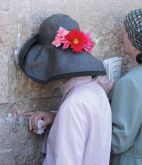
Mikhail/shutterstock.com
The sense of God’s presence is very strong at the Wall, easily moving me to prayer and to a desire to stay indefinitely. Feeling the cool, rough texture of the stones and gazing at the massive size of the Wall only adds to the mystique and the yearning to linger for great lengths of time.
One of the reasons that the Kotel is one of my favorite spots in all Israel is that it is a connecting point for Jews and Christians alike. It is the common gathering place for prayer, where Jews, Christians, and even the non-religious can be found praying for the nation of Israel, for the Jewish people worldwide, for peace in the Middle East and the world, and for the Almighty God to pour out His blessings and help.
While I was there during Sukkot (the Feast of Tabernacles) in 2013, I felt a strong camaraderie with others around me, even though I was one of few Gentiles in a sea of Jewish worshippers. As I stood there watching, reading Scripture and praying, a man came up to me and asked if I had a lulav (a traditional bundle of willow, myrtle and palm branches), and a citron which is called an etrog. When I said, ”No,” he immediately handed me his and instructed me in the proper way to wave it and in what to say. Here was a perfect stranger who felt like a friend or family member giving me help and instruction!
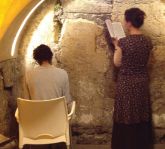
Dan Brown/Bridgesforpeace.com
Some may ask: “How can this place—which is not particularly beautiful—have such a powerful effect on so many?” There might be as many answers as people who visit the Wall, but I believe the overarching answer goes beyond a historical understanding to the current-day sense of the presence of God in this place. God Himself said, “My eyes and My heart will be there perpetually” (1 Kings 9:3).
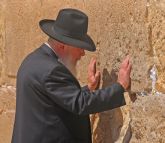
Rick and Grace /knelsenkollection.com
According to Jewish tradition, the Divine Presence has never left the Western Wall. In his book, Touching the Stones of Our Heritage, Dan Bahat writes that “generation upon generation of Jews have come here to embrace the stones; to reach out and touch its crevices…Everything has been inscribed and embedded in these stones; they have absorbed the prayers of those [who were] near, and the yearnings of those afar. He who wishes to stand in awe, to feel and to understand, shall come to Jerusalem, to the Western Wall. Here is the place where lament and joy, despair and hope unite.”
The Western Wall—the remnant of the ancient Temple complex—evokes memories of Israel’s glorious past: of Adonai dwelling within the Temple…of an era of Jewish sovereignty over the Land…of days gone by still captured in the dreams of many Jewish people. This remnant of the past brings hope for a full renewal of God’s blessings upon His people, and for some, even a restoration of their past glory as God has promised in His Word.
While King David, and his son, King Solomon, each recognized and declared that God’s presence could not be contained within a “temple made by hands” (1 Kings 8:27; Acts 7:48), the Jewish people—and, for that matter, most human beings—have found encouragement to seek the Divine by looking toward temples, shrines and other houses of worship. Such is the irresistible appeal of the ancient stones of the Western Wall.
This longing is good. God wants all people everywhere to long for and seek after Him. He even promises in Jeremiah 29:13 that He will be found by those who seek Him. So, in this case, the Western Wall is an enduring reminder to the Jewish people to seek their God; not just to seek a restoration of past glory but to seek the God of the present, the Living God who has been doing a new thing for the Jewish people (Isa. 43:19) and wants to reveal Himself afresh in this day.
The One who is drawing His people back to the Land from the four corners of the earth has a present-day plan for His people, one that was actually revealed through His prophet many centuries ago. Among many other promises, the prophet Jeremiah has this to say to the Jewish people of today: “Therefore, behold, days are coming, declares the LORD, when it will no longer be said, ‘As the LORD lives, who brought up the sons of Israel out of the land of Egypt,’ but, ‘As the LORD lives, who brought up the sons of Israel from the land of the north and from all the countries where He had banished them.’ For I will restore them to their own land which I gave to their fathers” (Jer. 16:14–15).
To the non-Jew, the same is true. The Western Wall stands today as a reminder that God and His works cannot be obliterated and He is still seeking for those who desire to know Him and to be blessed by Him. For Jew and Gentile alike, the Wall serves as a tangible connection to God. It’s almost as if the stones themselves are crying out to a confused, yet curious world, “Come here…draw near…and you will find the One you’re searching for.” That is the power of God that is present still at the Western Wall.
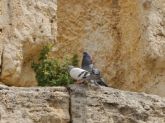
Rick and Grace /knelsenkollection.com
Just as there is far more to the Western Wall than meets your eye from the Prayer Plaza, the Wall is obviously far more than just a “wailing place” where the Jewish people mourn the loss of their ancient Temples. It is part of the “foundation stone” that points back to the very beginning of their existence as the chosen people of God. It is the structure that the Jewish people have been drawn back to throughout the centuries. It is a symbol and reminder of the reunification of their beloved city, the place that their own scriptures warn them never to forget and to pray for always. And it is the place of national identity and unity, where God commanded them to gather before Him several times a year. It is their meeting place, a locus of lamentation and prayer, the site of countless celebrations, and a focal point for many as they await the coming of the Messiah. It is no wonder that millions flock to this epicenter of worship and supplication.
Scripture is taken from the New American Standard Bible unless otherwise noted.
Bahat, Dan. Touching the Stones of Our Inheritance: The Western Wall Tunnels. The
Israel MOD Publishing House: The Western Wall Heritage Foundation, 2002.
Dorling Kindersley. Travel Guides: Jerusalem and the Holy Land. New York:
Dorling Kindersley Publishing, 2000.
http://haruth.com/mw/kvitlach.html/kvitlach-and-stories-from-the -western-wall
Jewish Virtual Library, https://www.jewishvirtualibrary.org
shabbatofalifetime.com/program/the-western-wall/
Sprinkle, Charleeda. “Praying at the Wall.”
http://www.bridgesforpeace.com/il/dispatch/article/praying-at-the-wall
Telushkin, Rabbi Joseph. Jewish Literacy. New York: William
Morrow and Co., 1991.
All logos and trademarks in this site are property of their respective owner. All other materials are property of Bridges for Peace. Copyright © 2024.
Website Site Design by J-Town Internet Services Ltd. - Based in Jerusalem and Serving the World.